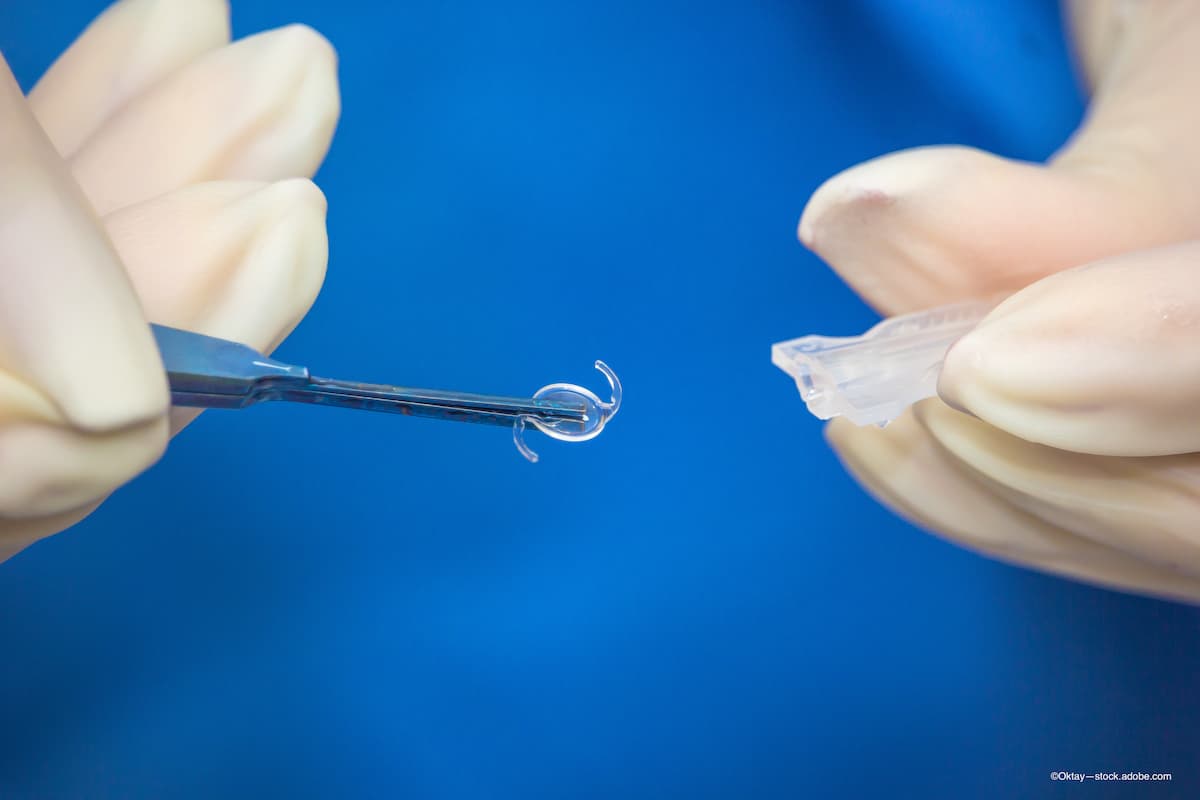IOL replacement vs rescue: The ophthalmologist's dilemma
There is no significant difference between IOL replacement and rescue in terms of postoperative visual and surgical outcomes for eyes undergoing secondary IOL scleral fixation.

While investigators have found little difference in visual outcomes and complications between IOL replacement and rescue for sutureless intrascleral fixation of dislocated IOLs, the choice remains debatable. As a result, surgeons must determine which option is likely to provide the best outcome for a patient.
IOLs become dislocated in approximately 0.2–2% of cases after cataract surgery, and the possible treatments for dislocated posterior-chamber IOLs include open-loop anterior-chamber IOLs and iris- and scleral-sutured posterior-chamber IOLs. These techniques have similar outcomes, explained Dr Jingyi Ma, from the Faculty of Medicine and Dentistry at the University of Alberta in Canada.
IOL rescue is a possibility in eyes in which scleral fixation is performed as a secondary procedure. However, there is not enough information about IOL rescue to ascertain the long-term visual and surgical outcomes compared with IOL replacement.
Dr Ma and colleagues carried out a retrospective cohort study from January 2014 to January 2017 that included patients (136 eyes) with a dislocated posterior-chamber IOL who were treated with secondary sutureless intrascleral tunnel fixation of the dislocated IOL. The procedures were performed by one of five vitreoretinal surgeons at the Royal Alexandra Hospital in Edmonton, Alberta, Canada.
The pre-existing IOL was either used again or replaced with a three-piece IOL.As Dr Ma explained, the study outcomes were the postoperative best-corrected visual acuity (VA) at 2 and 6 months, the need for anti-inflammatory drops postoperatively, complications, and indications for another surgery at 2 and 6 months.
Observations
Thirty-nine patients underwent IOL rescue and 97 had IOL replacement procedures. The mean patient age in those who underwent IOL rescue or replacement was 68.9 and 71.8 years, respectively. The respective follow-up times were 13.6 and 12.3 months. Dr Ma reported that the two groups were balanced for gender, VA and the duration of the pre-existing IOL.
Regarding VA, the IOL rescue group fared slightly better at 6 months postoperatively, than the IOL replacement group, compared with baseline. Anti-inflammatory drops were used less often in both groups at 2 and 6 months.
“At 6 months, 13% of the IOL rescue group needed drops compared with 19% in the IOL replacement group, although the difference did not reach significance,” Dr Ma said. At 6 months, 12 complications developed in the IOL rescue group and 31 in the IOL replacement group, reflecting complication rates of 31% and 32%, respectively. The most frequent were cystoid macular oedema in three and eight eyes, inflammation in three and seven eyes, and elevated intraocular pressure in two and six eyes, respectively.
A subsequent surgery was required in 26% and 13% of the IOL rescue and replacement groups, respectively. The mean times to the first surgery were 1.6 and 2.1 months.
Survival analysis showed that if another surgery was required, the need arose within the first few months of the initial surgery. After this, both groups remained stable. The risk factors identified for a subsequent surgery were the presence of a complication (hazard ratio [HR], 2.8) and worse VA at 2 months (HR, 1.5). Lens replacement had a lower, non-significant HR for failure.
Conclusions
IOL rescue may provide a slight benefit because of the better postoperative VA and less need for use of anti-inflammatory drops. However, IOL replacement is generally associated with fewer instances of a second surgery being required, which approached significant levels.
The risk factors for a subsequent surgery are complications and worse VA at 2 months, Dr Ma said. “Both IOL replacement and rescue are reasonable options for the sutureless scleral fixation technique,” she concluded.
--
Jingyi Ma, BMSc
e: jma@ualberta.ca
This article is adapted from Dr Ma’s presentation at the American Academy of Ophthalmology’s recent virtual annual meeting. She reported no financial interest in this subject matter.
Related Content: Gene Therapy | Retina | Cataract & Refractive

